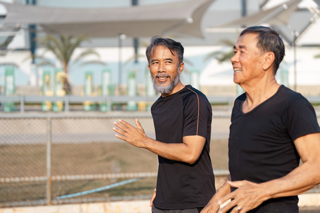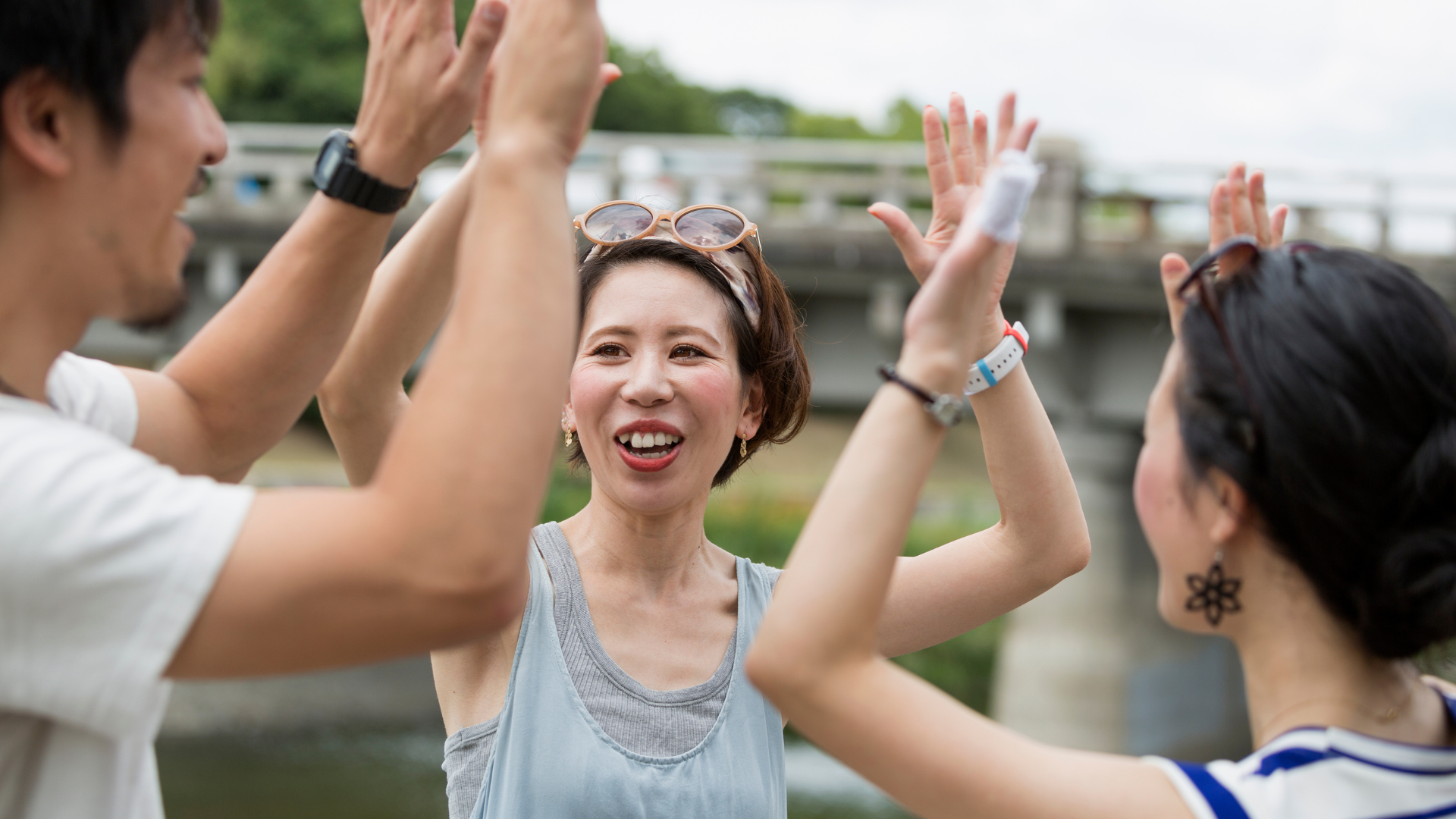Introduction: The Science of Movement and Longevity
Ageing is often associated with loss of muscle mass, reduced mobility, and increased risk of chronic diseases. However, research shows that regular physical activity can slow these processes, improve healthspan, and even add years to life. A study published in the British Journal of Sports Medicine found that adults engaging in 150-300 minutes of moderate physical activity per week had a 37% lower risk of premature death (Ekelund et al., 2019).
Beyond extending lifespan, exercise maintains independence, strength, and cognitive function, ensuring that ageing does not mean decline but thriving in later years. This article explores evidence-based exercise strategies to maintain strength, mobility, and endurance, while providing step-by-step guidance to inspire lifelong movement habits.
The Biology of Ageing and Physical Decline
As we age, our bodies undergo several changes:
- Sarcopenia (Muscle Loss): After age 30, we lose 3-5% of muscle mass per decade (Cruz-Jentoft et al., 2019).
- Reduced Bone Density: The risk of osteoporosis increases, leading to fractures and frailty.
- Declining Cardiovascular and Respiratory Efficiency: The heart and lungs weaken, reducing stamina and oxygen efficiency.
- Decreased Flexibility and Balance: This leads to a higher risk of falls and injuries.
The good news? Exercise can counteract these changes, keeping the body strong, mobile, and resilient.
The Best Types of Exercise for Longevity
1. Strength Training: Preventing Muscle Loss and Frailty
Strength training is critical for maintaining muscle mass, bone density, and metabolic health. Research shows that resistance training twice a week reduces frailty, improves metabolism, and lowers mortality risk (Westcott, 2012).
Best Strength Exercises for Longevity:
- Squats (bodyweight or weighted) – Strengthens legs and core, improving mobility.
- Deadlifts (light or moderate weight) – Enhances posture and bone density.
- Push-ups or Bench Press – Builds upper body strength and endurance.
- Resistance Band Rows – Supports back muscles, reducing posture issues.
- Lunges and Step-ups – Improves balance, coordination, and leg strength.
Step-by-Step Guide to Starting Strength Training:
- Begin with Bodyweight Movements: Master squats, push-ups, and lunges.
- Incorporate Resistance Bands: These provide gentle progression.
- Add Weights Gradually: Start with light dumbbells or kettlebells.
- Aim for 2-3 Sessions per Week: Each session should include 8-12 reps per exercise, 2-3 sets.
- Focus on Form: Incorrect movements lead to injuries. Consider hiring a trainer or following online guides.
2. Aerobic Exercise: Supporting Heart and Brain Health
Cardiovascular exercise is vital for heart health, brain function, and metabolic efficiency. Studies show that individuals who engage in regular aerobic activity have a 40-50% reduced risk of heart disease, diabetes, and cognitive decline (Booth et al., 2017).
Best Aerobic Exercises for Longevity:
- Brisk Walking (30-60 mins/day): Reduces heart disease risk by 31%.
- Swimming: Low-impact and excellent for joint health.
- Cycling: Enhances leg strength and endurance.
- Jump Rope: Boosts cardiovascular fitness and coordination.
- Interval Training (HIIT): Short bursts of intensity improve heart and lung efficiency.
Step-by-Step Guide to Incorporating Aerobic Exercise:
- Start with Low-Intensity Walking: 15-20 minutes daily.
- Gradually Increase to 150-300 Minutes per Week.
- Mix Up the Routine: Rotate between walking, cycling, or swimming.
- Incorporate High-Intensity Intervals Once Per Week: Sprint for 30 seconds, walk for 1 minute, repeat for 10-15 minutes.
3. Flexibility and Mobility: Preventing Injuries and Enhancing Daily Function
Flexibility and mobility exercises enhance joint function, posture, and reduce injury risk. Research indicates that regular stretching and mobility work reduce fall risk by 20-30% (Sherrington et al., 2017).
Best Flexibility and Mobility Exercises:
- Yoga or Tai Chi: Improves balance, reduces stress, and increases flexibility.
- Dynamic Stretches (Arm Circles, Hip Openers): Ideal pre-workout warm-ups.
- Foam Rolling: Reduces muscle tightness and enhances recovery.
- Seated and Standing Hamstring Stretches: Improves lower body flexibility.
Step-by-Step Guide to Mobility Training:
- Stretch Daily for 10-15 Minutes: Focus on full-body movements.
- Incorporate Yoga or Tai Chi 1-2x per Week.
- Use Foam Rolling or Massage Balls for Tight Muscles.
- Add Balance Drills (Standing on One Leg, Heel-to-Toe Walks).
4. Balance and Coordination: Reducing Fall Risks
Falls are a leading cause of injury in older adults. Exercises focusing on balance and coordination can significantly lower fall risk.
Best Balance Exercises:
- Single-Leg Stands: Stand on one foot for 30 seconds.
- Heel-to-Toe Walking: Improves walking stability.
- Bosu Ball Squats: Strengthens stabilizing muscles.
- Chair Exercises for Stability: Seated marches and standing leg lifts.
Step-by-Step Guide to Balance Training:
- Start with Basic Standing Exercises: 10-15 minutes per session.
- Progress to Dynamic Movements: Heel-to-toe walking, step-ups.
- Incorporate Balance Tools: Balance boards or stability balls.
- Perform at Least 2-3 Sessions per Week.
Conclusion: The Longevity Movement Mindset
Exercise is not just about aesthetics—it is a tool for longevity, vitality, and independence in later years. The key is to start where you are, stay consistent, and make movement a lifelong habit.
So, whether it’s lifting weights, going for a walk, or practicing yoga, the best exercise for longevity is the one you enjoy and can sustain.
Next Up: Mental Health and Cognitive Well-being—How to Keep Your Brain Sharp as You Age.
References
- Booth, F. W., Roberts, C. K., & Laye, M. J. (2017). Lack of exercise is a major cause of chronic diseases. Comprehensive Physiology, 2(2), 1143-1211.
- Cruz-Jentoft, A. J., et al. (2019). Sarcopenia: revised European consensus on definition and diagnosis. Age and Ageing, 48(1), 16-31.
- Ekelund, U., et al. (2019). Physical activity and mortality: dose-response meta-analysis. BMJ, 366, l4570.
- Sherrington, C., et al. (2017). Exercise to prevent falls in older adults. British Journal of Sports Medicine, 51(21), 1205-1211.
- Westcott, W. L. (2012). Resistance training is medicine. Current Sports Medicine Reports, 11(4), 209-216.





